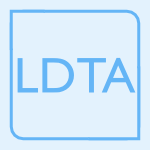170 papers:
 CBSE-2015-RamachandranDPM #network
CBSE-2015-RamachandranDPM #network- Hitch Hiker: A Remote Binding Model with Priority Based Data Aggregation for Wireless Sensor Networks (GSR, WD, JP, SM, WJ, DH, BP), pp. 43–48.
 DATE-2015-SamieBHH #multi #online
DATE-2015-SamieBHH #multi #online- Online binding of applications to multiple clock domains in shared FPGA-based systems (FS, LB, CMH, JH), pp. 25–30.
 ESOP-2015-Ricciotti #data type
ESOP-2015-Ricciotti #data type- Binding Structures as an Abstract Data Type (WR), pp. 762–786.
 ICEIS-v2-2015-KriouileMA #as a service #configuration management #towards
ICEIS-v2-2015-KriouileMA #as a service #configuration management #towards- Towards a High Configurable SaaS — To Deploy and Bind Auser-aware Tenancy of the SaaS (HK, ZM, BEA), pp. 674–679.
 CSL-2015-MogaveroP #first-order #logic
CSL-2015-MogaveroP #first-order #logic- Binding Forms in First-Order Logic (FM, GP), pp. 648–665.
 DAC-2014-ChenT #control flow #design
DAC-2014-ChenT #control flow #design- Reliability-aware Register Binding for Control-Flow Intensive Designs (LC, MBT), p. 6.
 ICFP-2014-StansiferW #flexibility #named #programming
ICFP-2014-StansiferW #flexibility #named #programming- Romeo: a system for more flexible binding-safe programming (PS, MW), pp. 53–65.
 CHI-2014-SunH #approach #relational
CHI-2014-SunH #approach #relational- Binding the material and the discursive with a relational approach of affordances (HS, WHD), pp. 3533–3542.
 KEOD-2014-Otero-CerdeiraR #named #ontology
KEOD-2014-Otero-CerdeiraR #named #ontology- OntoPhil — Exploitation of Binding Points for Ontology Matching (LOC, FJRM, TVR, AMGR), pp. 5–15.
 ECOOP-2014-MayerS #automation #domain-specific language #framework #java #multi #refactoring
ECOOP-2014-MayerS #automation #domain-specific language #framework #java #multi #refactoring- Automated Multi-Language Artifact Binding and Rename Refactoring between Java and DSLs Used by Java Frameworks (PM, AS), pp. 437–462.
 DATE-2013-CastellanaF #analysis #independence #liveness #scheduling #synthesis
DATE-2013-CastellanaF #analysis #independence #liveness #scheduling #synthesis- Scheduling independent liveness analysis for register binding in high level synthesis (VGC, FF), pp. 1571–1574.
 DLT-2013-LibkinTV #database #graph #query #regular expression #word
DLT-2013-LibkinTV #database #graph #query #regular expression #word- Regular Expressions with Binding over Data Words for Querying Graph Databases (LL, TT, DV), pp. 325–337.
 CHI-2013-JokelaL #collaboration #comparative #evaluation #interactive #mobile
CHI-2013-JokelaL #collaboration #comparative #evaluation #interactive #mobile- A comparative evaluation of touch-based methods to bind mobile devices for collaborative interactions (TJ, AL), pp. 3355–3364.
 HIMI-HSM-2013-ZhangA #flexibility #user interface
HIMI-HSM-2013-ZhangA #flexibility #user interface- Improving the Flexibility of In-Vehicle Infotainment Systems by the Smart Management of GUI-Application Binding Related Information (RZ, TA), pp. 223–232.
 ASPLOS-2013-KangW #approach #hardware
ASPLOS-2013-KangW #approach #hardware- To hardware prefetch or not to prefetch?: a virtualized environment study and core binding approach (HK, JLW), pp. 357–368.
 DATE-2012-KirschPSCHHLLRSTV #cyber-physical #in the cloud #migration #problem
DATE-2012-KirschPSCHHLLRSTV #cyber-physical #in the cloud #migration #problem- Cyber-physical cloud computing: The binding and migration problem (CMK, EP, RS, HC, RH, JH, FL, ML, AR, RS, RT, DV), pp. 1425–1428.
 FLOPS-2012-Uustalu #performance
FLOPS-2012-Uustalu #performance- Explicit Binds: Effortless Efficiency with and without Trees (TU), pp. 317–331.
 KDIR-2012-BressoGDNS #3d #concept analysis #learning #relational
KDIR-2012-BressoGDNS #3d #concept analysis #learning #relational- Formal Concept Analysis for the Interpretation of Relational Learning Applied on 3D Protein-binding Sites (EB, RG, MDD, AN, MST), pp. 111–120.
 SAC-2012-HeinrichG #standard #web
SAC-2012-HeinrichG #standard #web- Data binding for standard-based web applications (MH, MG), pp. 652–657.
 LDTA-2012-JongeV #refactoring
LDTA-2012-JongeV #refactoring- A language generic solution for name binding preservation in refactorings (MdJ, EV), p. 2.
 SLE-2012-KonatKWV #declarative
SLE-2012-KonatKWV #declarative- Declarative Name Binding and Scope Rules (GDPK, LCLK, GW, EV), pp. 311–331.
 ESOP-2011-UrbanK
ESOP-2011-UrbanK- General Bindings and α-Equivalence in Nominal Isabelle (CU, CK), pp. 480–500.
 CSMR-2011-AndradeRGSRB #flexibility #implementation
CSMR-2011-AndradeRGSRB #flexibility #implementation- Assessing Idioms for Implementing Features with Flexible Binding Times (RA, MR, VG, LS, HR, PB), pp. 231–240.
 ICFP-2011-PopescuG #recursion #syntax
ICFP-2011-PopescuG #recursion #syntax- Recursion principles for syntax with bindings and substitution (AP, ELG), pp. 346–358.
 KDIR-2011-BicegoFBCM #grid #protocol
KDIR-2011-BicegoFBCM #grid #protocol- An Innovative Protocol for Comparing Protein Binding Sites via Atomic Grid Maps (MB, ADF, PB, AC, VM), pp. 413–422.
 QoSA-2010-GhezziMMT
QoSA-2010-GhezziMMT- QoS Driven Dynamic Binding in-the-many (CG, AM, VPLM, GT), pp. 68–83.
 DAC-2010-ElizehN #embedded #memory management
DAC-2010-ElizehN #embedded #memory management- Embedded memory binding in FPGAs (KE, NN), pp. 457–462.
 DocEng-2010-TsengKLC #named #user interface #xml
DocEng-2010-TsengKLC #named #user interface #xml- XUIB: XML to user interface binding (LT, YSK, HHL, CLC), pp. 51–60.
 WRLA-2010-Velardo #concurrent #framework #multi #semantics
WRLA-2010-Velardo #concurrent #framework #multi #semantics- Multiset Rewriting: A Semantic Framework for Concurrency with Name Binding (FRV), pp. 191–207.
 FLOPS-2010-ThiemannS #combinator #generative #polymorphism
FLOPS-2010-ThiemannS #combinator #generative #polymorphism- Tag-Free Combinators for Binding-Time Polymorphic Program Generation (PT, MS), pp. 87–102.
 TOOLS-EUROPE-2010-GolbeckSK #aspectj
TOOLS-EUROPE-2010-GolbeckSK #aspectj- Late Binding of AspectJ Advice (RMG, PS, GK), pp. 173–191.
 SAC-2010-LinsOTFT #algorithm #documentation
SAC-2010-LinsOTFT #algorithm #documentation- A dewarping algorithm to compensate volume binding distortion in scanned documents (RDL, DMdO, GT, JF, MT), pp. 61–62.
 PPoPP-2010-RadojkovicCVPCNV #concurrent #network #parallel #thread
PPoPP-2010-RadojkovicCVPCNV #concurrent #network #parallel #thread- Thread to strand binding of parallel network applications in massive multi-threaded systems (PR, VC, JV, AP, FJC, MN, MV), pp. 191–202.
 DAC-2009-CromarLC #algorithm #reduction
DAC-2009-CromarLC #algorithm #reduction- FPGA-targeted high-level binding algorithm for power and area reduction with glitch-estimation (SC, JL, DC), pp. 838–843.
 DATE-2009-GolshanB #composition #design
DATE-2009-GolshanB #composition #design- SEU-aware resource binding for modular redundancy based designs on FPGAs (SG, EB), pp. 1124–1129.
 PLDI-2009-RavitchJAL #automation #generative #library #static analysis #using
PLDI-2009-RavitchJAL #automation #generative #library #static analysis #using- Automatic generation of library bindings using static analysis (TR, SJ, EA, BL), pp. 352–362.
 ICFP-2009-LicataH
ICFP-2009-LicataH- A universe of binding and computation (DRL, RH), pp. 123–134.
 HCD-2009-RashidQ #evaluation #interactive #smarttech
HCD-2009-RashidQ #evaluation #interactive #smarttech- Interaction Techniques for Binding Smartphones: A Desirability Evaluation (UR, AJQ), pp. 120–128.
 IDGD-2009-Rodriguez #community
IDGD-2009-Rodriguez #community- Affordable Wireless Connectivity Linking Poor Latin American Communities Binding Their Schools by Sharing ICT Training for “Maestros” of Primary Schools (COR), pp. 404–412.
 ECMDA-FA-2009-BeucheW #flexibility #modelling
ECMDA-FA-2009-BeucheW #flexibility #modelling- Managing Flexibility: Modeling Binding-Times in Simulink (DB, JW), pp. 289–300.
 ICLP-2009-GuzmanCH #implementation #multi
ICLP-2009-GuzmanCH #implementation #multi- A Tabling Implementation Based on Variables with Multiple Bindings (PCdG, MC, MVH), pp. 190–204.
 TLCA-2009-Atkey #for free #parametricity #representation #syntax #using
TLCA-2009-Atkey #for free #parametricity #representation #syntax #using- Syntax for Free: Representing Syntax with Binding Using Parametricity (RA), pp. 35–49.
 TLCA-2009-HarperLZ #approach
TLCA-2009-HarperLZ #approach- A Pronominal Approach to Binding and Computation (RH, DRL, NZ), pp. 3–4.
 DATE-2008-CongX #network
DATE-2008-CongX #network- Simultaneous FU and Register Binding Based on Network Flow Method (JC, JX), pp. 1057–1062.
 DocEng-2008-KerneTDK #documentation #framework #object-oriented #xml
DocEng-2008-KerneTDK #documentation #framework #object-oriented #xml- A concise XML binding framework facilitates practical object-oriented document engineering (AK, ZOT, BD, MK), pp. 62–65.
 VLDB-2008-GuravannavarS
VLDB-2008-GuravannavarS- Rewriting procedures for batched bindings (RG, SS), pp. 1107–1123.
 LICS-2008-LicataZH
LICS-2008-LicataZH- Focusing on Binding and Computation (DRL, NZ, RH), pp. 241–252.
 ICEIS-DISI-2007-BoppSH #automation #knowledge base
ICEIS-DISI-2007-BoppSH #automation #knowledge base- Enabling CSCW systems to automatically bind external knowledge bases (TB, JS, TH), pp. 323–329.
 ICLP-2007-PietrzakH #automation #fault #logic programming #source code
ICLP-2007-PietrzakH #automation #fault #logic programming #source code- Automatic Binding-Related Error Diagnosis in Logic Programs (PP, MVH), pp. 333–347.
 DAC-2006-ChenCFX #multi
DAC-2006-ChenCFX #multi- Optimality study of resource binding with multi-Vdds (DC, JC, YF, JX), pp. 580–585.
 DAC-2006-HuangCNY
DAC-2006-HuangCNY- Register binding for clock period minimization (SHH, CHC, YTN, WCY), pp. 439–444.
 ICSM-2006-GoldHLM #approach #bound #concept #source code #using
ICSM-2006-GoldHLM #approach #bound #concept #source code #using- Allowing Overlapping Boundaries in Source Code using a Search Based Approach to Concept Binding (NG, MH, ZL, KM), pp. 310–319.
 FM-2006-Zave #composition #network
FM-2006-Zave #composition #network- Compositional Binding in Network Domains (PZ), pp. 332–347.
 ICFP-2006-KiselyovSS
ICFP-2006-KiselyovSS- Delimited dynamic binding (OK, CcS, AS), pp. 26–37.
 CHI-2006-BosONSHJ #distributed #question
CHI-2006-BosONSHJ #distributed #question- Collocation bindness in partially distributed groups: is there a downside to being collocated? (NB, JSO, NN, NSS, SH, EWJ), pp. 1313–1321.
 DAC-2005-KimK #array #design #embedded #memory management #optimisation #scheduling
DAC-2005-KimK #array #design #embedded #memory management #optimisation #scheduling- Memory access optimization through combined code scheduling, memory allocation, and array binding in embedded system design (JK, TK), pp. 105–110.
 DAC-2005-MukherjeeMM #resource management #synthesis
DAC-2005-MukherjeeMM #resource management #synthesis- Temperature-aware resource allocation and binding in high-level synthesis (RM, SOM, GM), pp. 196–201.
 IFL-2005-GrelckSS #analysis #array #source code
IFL-2005-GrelckSS #analysis #array #source code- A Binding Scope Analysis for Generic Programs on Arrays (CG, SBS, AVS), pp. 212–230.
 SIGAda-2005-AusdenN #c++ #using
SIGAda-2005-AusdenN #c++ #using- Using ASIS to generate C++ bindings (HA, KAN), pp. 23–30.
 ICSE-2005-TamaiUI #adaptation
ICSE-2005-TamaiUI #adaptation- An adaptive object model with dynamic role binding (TT, NU, RI), pp. 166–175.
 TLCA-2005-PowerT
TLCA-2005-PowerT- Binding Signatures for Generic Contexts (JP, MT), pp. 308–323.
 TLCA-2005-PrevostoB #proving
TLCA-2005-PrevostoB #proving- Proof Contexts with Late Binding (VP, SB), pp. 324–338.
 DAC-2004-LyuhK #energy #memory management #multi #scheduling
DAC-2004-LyuhK #energy #memory management #multi #scheduling- Memory access scheduling and binding considering energy minimization in multi-bank memory systems (CGL, TK), pp. 81–86.
 DATE-v1-2004-Ziv #generative
DATE-v1-2004-Ziv #generative- Stimuli Generation with Late Binding of Values (AZ), pp. 558–563.
 TACAS-2004-LingerS #analysis #constraints #ml #theorem proving #type inference
TACAS-2004-LingerS #analysis #constraints #ml #theorem proving #type inference- Binding-Time Analysis for MetaML via Type Inference and Constraint Solving (NL, TS), pp. 266–279.
 UML-2004-CaronCMV #ocl #uml
UML-2004-CaronCMV #ocl #uml- An OCL Formulation of UML2 Template Binding (OC, BC, AM, GV), pp. 27–40.
 GPCE-2004-PadovaniCZ #approach #documentation #generative #implementation
GPCE-2004-PadovaniCZ #approach #documentation #generative #implementation- A Generative Approach to the Implementation of Language Bindings for the Document Object Model (LP, CSC, SZ), pp. 469–487.
 LOPSTR-2004-CraigGLH #analysis #automation #prolog
LOPSTR-2004-CraigGLH #analysis #automation #prolog- Fully Automatic Binding-Time Analysis for Prolog (SJC, JPG, ML, KSH), pp. 53–68.
 PDCL-2004-VanhoofBL #analysis
PDCL-2004-VanhoofBL #analysis- Binding-Time Analysis for Mercury (WV, MB, ML), pp. 189–232.
 PADL-2004-AtanassowCJ #haskell #named #xml
PADL-2004-AtanassowCJ #haskell #named #xml- UUXML: A Type-Preserving XML Schema-Haskell Data Binding (FA, DC, JJ), pp. 71–85.
 SPLC-2004-Krueger #product line #what
SPLC-2004-Krueger #product line #what- Product Line Binding Times: What You Don?t Know Can Hurt You (CWK), pp. 305–306.
 CSL-2004-Miller #quantifier
CSL-2004-Miller #quantifier- Bindings, Mobility of Bindings, and the “generic judgments”-Quantifier: An Abstract (DM), p. 24.
 CSL-2004-SchoppS #dependent type #type system
CSL-2004-SchoppS #dependent type #type system- A Dependent Type Theory with Names and Binding (US, IS), pp. 235–249.
 ICLP-2004-CheneyU #logic programming #named #programming language #prolog
ICLP-2004-CheneyU #logic programming #named #programming language #prolog- αProlog: A Logic Programming Language with Names, Binding and α-Equivalence (JC, CU), pp. 269–283.
 FME-2003-DuranCS #compilation #inheritance
FME-2003-DuranCS #compilation #inheritance- A Strategy for Compiling Classes, Inheritance, and Dynamic Binding (AD, AC, AS), pp. 301–320.
 EDOC-2003-ParlavantzasCB #component #framework #middleware
EDOC-2003-ParlavantzasCB #component #framework #middleware- An Extensible Binding Framework for Component-Based Middleware (NP, GC, GSB), pp. 252–263.
 LOPSTR-2003-MurakamiHKT #algorithm #analysis #performance #staging
LOPSTR-2003-MurakamiHKT #algorithm #analysis #performance #staging- An Efficient Staging Algorithm for Binding-Time Analysis (TM, ZH, KK, MT), pp. 106–107.
 PPDP-2003-Hamana #algebra #approach #term rewriting
PPDP-2003-Hamana #algebra #approach #term rewriting- Term rewriting with variable binding: an initial algebra approach (MH), pp. 148–159.
 PPDP-2003-Nanevski
PPDP-2003-Nanevski- From dynamic binding to state via modal possibility (AN), pp. 207–218.
 ASIA-PEPM-2002-Gluck
ASIA-PEPM-2002-Gluck- Jones optimality, binding-time improvements, and the strength of program specializers (RG), pp. 9–19.
 ASIA-PEPM-2002-SheardL #analysis #search-based #using
ASIA-PEPM-2002-SheardL #analysis #search-based #using- Search-based binding time analysis using type-directed pruning (TS, NL), pp. 20–31.
 ICFP-2002-JonesG #analysis #generative #termination
ICFP-2002-JonesG #analysis #generative #termination- Program generation, termination, and binding-time analysis (NDJ, AJG), p. 283.
 AdaEurope-2002-MinguetGC #ada #standard
AdaEurope-2002-MinguetGC #ada #standard- An Ada Binding to the IEEE 1003.1q (POSIX Tracing) Standard (AEM, AGF, AC), pp. 321–333.
 GPCE-2002-JonesG #analysis #generative #termination
GPCE-2002-JonesG #analysis #generative #termination- Program Generation, Termination, and Binding-Time Analysis (NDJ, AJG), pp. 1–31.
 PPDP-2002-JonesG #analysis #generative #termination
PPDP-2002-JonesG #analysis #generative #termination- Abstract and conclusions of PLI invited paper: program generation, termination, and binding-time analysis (NDJ, AJG), p. 1.
 SAC-2002-HarrisonD #approach
SAC-2002-HarrisonD #approach- A hypothesis driven approach to condition specific transcription factor binding site characterization in S.c (RH, CD), pp. 151–158.
 DAC-2001-LapinskiiJV #clustering
DAC-2001-LapinskiiJV #clustering- High-Quality Operation Binding for Clustered VLIW Datapaths (VSL, MFJ, GdV), pp. 702–707.
 ICFP-2001-GanzST #generative #metaprogramming #multi #type safety
ICFP-2001-GanzST #generative #metaprogramming #multi #type safety- Macros as Multi-Stage Computations: Type-Safe, Generative, Binding Macros in MacroML (SEG, AS, WT), pp. 74–85.
 SIGAda-2001-Barkstrom #ada
SIGAda-2001-Barkstrom #ada- Ada 95 bindings for the NCSA hierarchical data format (BRB), pp. 27–30.
 TOOLS-USA-2001-Nudelman #design #eiffel
TOOLS-USA-2001-Nudelman #design #eiffel- Designing and Building the Eiffel Binding for COM (MN), pp. 66–72.
 ICFP-2000-ErkokL #monad #recursion
ICFP-2000-ErkokL #monad #recursion- Recursive monadic bindings (LE, JL), pp. 174–185.
 AdaEurope-2000-BriotBC #ada #design #implementation #named
AdaEurope-2000-BriotBC #ada #design #implementation #named- GtkAda: Design and Implementation of a High Level Binding in Ada (EB, JB, AC), pp. 112–124.
 ICPR-v3-2000-LiK #ambiguity #analysis #detection
ICPR-v3-2000-LiK #ambiguity #analysis #detection- Detection of Cognitive Binding During Ambiguous Figure Tasks by Wavelet Coherence Analysis of EEG Signals (THL, WRK), pp. 3098–3101.
 TOOLS-USA-2000-MorabitoSB #information management
TOOLS-USA-2000-MorabitoSB #information management- An Introduction to Knowledge Binding (JM, IS, AB), pp. 543–548.
 LOPSTR-2000-VanhoofB #analysis #composition #higher-order #towards
LOPSTR-2000-VanhoofB #analysis #composition #higher-order #towards- Towards a modular binding-time analysis for higher-order Mercury (WV, MB).
 FASE-1999-AnconaCZ #framework
FASE-1999-AnconaCZ #framework- A Formal Framework with Late Binding (DA, MC, EZ), pp. 30–44.
 SAS-1999-Asai #analysis
SAS-1999-Asai #analysis- Binding-Time Analysis for Both Static and Dynamic Expressions (KA), pp. 117–133.
 AdaEurope-1999-BliebergerKK #ada
AdaEurope-1999-BliebergerKK #ada- Ada Binding to a Shared Object Layer (JB, JK, EK), pp. 263–274.
 AdaEurope-1999-MillanLM #ada #adaptation #java #persistent #using
AdaEurope-1999-MillanLM #ada #adaptation #java #persistent #using- An Adaptation of our Ada95/O2 Binding to Provide Persistence to the Java Language: Sharing and Handling of Data between Heterogenous Applications using Persistence (TM, ML, FM), pp. 320–331.
 PADL-1999-JefferyDS #corba #named
PADL-1999-JefferyDS #corba #named- MCORBA: A CORBA Binding for Mercury (DJ, TD, ZS), pp. 211–227.
 ICLP-1999-VanhoofB #analysis
ICLP-1999-VanhoofB #analysis- Binding-time Analysis for Mercury (WV, MB), pp. 500–514.
 LICS-1999-FiorePT #syntax
LICS-1999-FiorePT #syntax- Abstract Syntax and Variable Binding (MPF, GDP, DT), pp. 193–202.
 DATE-1998-MesmanSTMJ #approach #constraints #pipes and filters
DATE-1998-MesmanSTMJ #approach #constraints #pipes and filters- A Constraint Driven Approach to Loop Pipelining and Register Binding (BM, MTJS, AHT, JLvM, JAGJ), pp. 377–383.
 VLDB-1998-Greco #database
VLDB-1998-Greco #database- Binding Propagation in Disjunctive Databases (SG), pp. 287–298.
 ESOP-1998-BruynoogheLS #analysis #deduction
ESOP-1998-BruynoogheLS #analysis #deduction- A Polyvariant Binding-Time Analysis for Off-line Partial Deduction (MB, ML, KFS), pp. 27–41.
 ICFP-1998-Kiselyov
ICFP-1998-Kiselyov- LAND*: an AND with local bindings, a guarded LET* special form (OK), p. 336.
 ICFP-1998-Kiselyov98a #abstraction #c++ #functional
ICFP-1998-Kiselyov98a #abstraction #c++ #functional- Functional Style in C++: Closures, Late Binding, and λ Abstractions (OK), p. 337.
 AdaEurope-1998-EmeryMN #ada #automation #how #process #question
AdaEurope-1998-EmeryMN #ada #automation #how #process #question- Automating the Ada Binding Process for Java- How Far Can We Go? (DEE, RFM, KAN), pp. 29–40.
 EDOC-1998-HoffnerS #contract
EDOC-1998-HoffnerS #contract- Co-operation, contracts, contractual match-making and binding (YH, AS), pp. 75–86.
 ALP-PLILP-1998-PontelliRG #complexity #object-oriented
ALP-PLILP-1998-PontelliRG #complexity #object-oriented- The Complexity of Late-Binding in Dynamic Object-Oriented Languages (EP, DR, GG), pp. 213–229.
 PEPM-1997-HornofN #analysis #imperative
PEPM-1997-HornofN #analysis #imperative- Accurate Binding-Time Analysis For Imperative Languages: Flow, Context, and Return Sensitivity (LH, JN), pp. 63–73.
 AdaEurope-1997-BakerO #ada #c #implementation #interface #lessons learnt
AdaEurope-1997-BakerO #ada #c #implementation #interface #lessons learnt- Ada Bindings for C Interfaces: Lessons Learned from the Florist Implementation (TPB, DIO), pp. 13–22.
 TRI-Ada-1997-BrukardtM #ada
TRI-Ada-1997-BrukardtM #ada- CLAW, a High Level, Portable, Ada 95 Binding for Microsoft Windows (RB, TM), pp. 91–104.
 DAC-1996-IyerK #architecture #named #self #synthesis
DAC-1996-IyerK #architecture #named #self #synthesis- Introspection: A Low Overhead Binding Technique During Self-Diagnosing Microarchitecture Synthesis (BI, RK), pp. 137–142.
 ICFP-1996-JonesPS #float #named #performance #source code
ICFP-1996-JonesPS #float #named #performance #source code- Let-floating: Moving Bindings to Give Faster Programs (SLPJ, WP, AS), pp. 1–12.
 ECOOP-1996-QianK #functional #object-oriented #programming
ECOOP-1996-QianK #functional #object-oriented #programming- Typed Object-Oriented Functional Programming with Late Binding (ZQ, BKB), pp. 48–72.
 LICS-1996-Davies #analysis #approach
LICS-1996-Davies #analysis #approach- A Temporal-Logic Approach to Binding-Time Analysis (RD), pp. 184–195.
 DAC-1995-ChangP #power management
DAC-1995-ChangP #power management- Register Allocation and Binding for Low Power (JMC, MP), pp. 29–35.
 PODS-1995-RajaramanSU #query #using
PODS-1995-RajaramanSU #query #using- Answering Queries Using Templates with Binding Patterns (AR, YS, JDU), pp. 105–112.
 PEPM-1995-DasRH #analysis #imperative #semantics #source code
PEPM-1995-DasRH #analysis #imperative #semantics #source code- Semantic Foundations of Binding Time Analysis for Imperative Programs (MD, TWR, PVH), pp. 100–110.
 SAS-1995-DussartHM #analysis #polymorphism #polynomial #recursion #type system
SAS-1995-DussartHM #analysis #polymorphism #polynomial #recursion #type system- Polymorphic Recursion and Subtype Qualifications: Polymorphic Binding-Time Analysis in Polynomial Time (DD, FH, CM), pp. 118–135.
 SAS-1995-NielsenS #call-by
SAS-1995-NielsenS #call-by- Call-By-Name CPS-Translation as a Binding-Time Improvement (KN, MHS), pp. 296–313.
 SAS-1995-Vedrine #abstract interpretation #analysis #strict
SAS-1995-Vedrine #abstract interpretation #analysis #strict- Binding-Time Analysis and Strictness Analysis by Abstract Interpretation (FV), pp. 400–417.
 PLILP-1995-HengleinS #partial evaluation #semantics
PLILP-1995-HengleinS #partial evaluation #semantics- A Semantic Model of Binding Times for Safe Partial Evaluation (FH, DS), pp. 299–320.
 ICLP-1995-GuptaCP #array #logic programming #parallel
ICLP-1995-GuptaCP #array #logic programming #parallel- Shared Paged Binding Array: A Universal Datastructure for Parallel Logic Programming (GG, VSC, EP), p. 824.
 ESOP-1994-HengleinM #analysis #polymorphism
ESOP-1994-HengleinM #analysis #polymorphism- Polymorphic Binding-Time Analysis (FH, CM), pp. 287–301.
 PEPM-1994-BirkedalW #analysis #ml #standard
PEPM-1994-BirkedalW #analysis #ml #standard- Binding-Time Analysis for Standard ML (LB, MW), pp. 61–71.
 PEPM-1994-Davis #analysis
PEPM-1994-Davis #analysis- PERs from Projections for Binding-Time Analysis (KD), pp. 53–60.
 ICSE-1994-KeaneH #approach #case study #experience #formal method #parallel
ICSE-1994-KeaneH #approach #case study #experience #formal method #parallel- A Formal Approach to Determining Parallel Resource Bindings: Experience Report (JAK, WH), pp. 15–22.
 PEPM-1993-Andersen #analysis #c #pointer
PEPM-1993-Andersen #analysis #c #pointer- Binding-Time Analysis and the Taming of C Pointers (LOA), pp. 47–58.
 PEPM-1993-Bulyonkov #analysis
PEPM-1993-Bulyonkov #analysis- Extracting Polyvariant Binding Time Analysis from Polyvariant Specializer (MAB), pp. 59–65.
 PEPM-1993-Consel #analysis
PEPM-1993-Consel #analysis- Polyvariant Binding-Time Analysis For Applicative Languages (CC), pp. 66–77.
 PEPM-1993-Davis #analysis #higher-order
PEPM-1993-Davis #analysis #higher-order- Higher-order Binding-time Analysis (KD), pp. 78–87.
 TRI-Ada-1993-Byrnes #ada #migration
TRI-Ada-1993-Byrnes #ada #migration- Porting Applications Between Two Commercial Ada/Motif Bindings (CB), pp. 37–49.
 TRI-Ada-1993-MathiasR #ada
TRI-Ada-1993-MathiasR #ada- Ada/X Window System Bindings: Conversion Strategies (KSM, MAR), pp. 29–36.
 OOPSLA-1993-Hauck #approach #inheritance
OOPSLA-1993-Hauck #approach #inheritance- Inheritance Modeled with Explicit Bindings: An Approach to Typed Inheritance (FJH), pp. 231–239.
 POPL-1993-LeeF #multi
POPL-1993-LeeF #multi- Quasi-Static Scoping: Sharing Variable Bindings Across Multiple Lexical Scopes (SDL, DPF), pp. 479–492.
 POPL-1993-Wand #analysis #correctness #specification
POPL-1993-Wand #analysis #correctness #specification- Specifying the Correctness of Binding-Time Analysis (MW), pp. 137–143.
 TLCA-1993-CastagnaGL #calculus #semantics
TLCA-1993-CastagnaGL #calculus #semantics- A Semantics for λ&-early: A Calculus with Overloading and Early Binding (GC, GG, GL), pp. 107–123.
 DAC-1992-KrishnamoorthyN #using
DAC-1992-KrishnamoorthyN #using- Data Path Allocation using an Extended Binding Model (GK, JAN), pp. 279–284.
 DAC-1992-RimJL #synthesis
DAC-1992-RimJL #synthesis- Optimal Allocation and Binding in High-Level Synthesis (MR, RJ, RDL), pp. 120–123.
 PEPM-1992-ConselP #programming
PEPM-1992-ConselP #programming- A Programming Environment for Binding-time Based Partial Evaluators (CC, SP), pp. 62–66.
 PEPM-1992-RytzG #analysis
PEPM-1992-RytzG #analysis- A Polyvariant Binding Time Analysis (BR, MG), pp. 21–28.
 WSA-1992-GenglerR #analysis
WSA-1992-GenglerR #analysis- A Polyvariant Binding Time Analysis Handling Partially Known Values (MG, MR), pp. 322–330.
 WSA-1992-SolbergNN #analysis
WSA-1992-SolbergNN #analysis- Inference Systems for Binding Time Analysis (KLS, HRN, FN), pp. 247–254.
 LFP-1992-Bondorf
LFP-1992-Bondorf- Improving Binding Times Without Explicit CPS-Conversion (AB), pp. 1–10.
 TRI-Ada-C-1992-Cleveland #implementation
TRI-Ada-C-1992-Cleveland #implementation- Implementation versus Binding to the X Window Environment (SC), pp. 477–481.
 PLILP-1992-DorochevskyV #garbage collection
PLILP-1992-DorochevskyV #garbage collection- Binding Techniques and Garbage Collection for OR-Parallel CLP Systems (MD, AV), pp. 39–53.
 KBSE-1991-HeinemanKBB #parametricity
KBSE-1991-HeinemanKBB #parametricity- Rule Chaining in MARVEL: Dynamic Binding of Parameters (GTH, GEK, NSB, IBS), pp. 215–222.
 PEPM-1991-HuntS #analysis #perspective
PEPM-1991-HuntS #analysis #perspective- Binding Time Analysis: A New PERspective (SH, DS), pp. 154–165.
 PLDI-1991-Launchbury #analysis #strict
PLDI-1991-Launchbury #analysis #strict- Strictness and Binding-Time Analyses: Two for the Price of One (JL), pp. 80–91.
 FPCA-1991-Henglein #analysis #higher-order #performance #type inference
FPCA-1991-Henglein #analysis #higher-order #performance #type inference- Efficient Type Inference for Higher-Order Binding-Time Analysis (FH), pp. 448–472.
 DAC-1990-Woo #synthesis
DAC-1990-Woo #synthesis- A Global, Dynamic Register Allocation and Binding for a Data Path Synthesis System (NSW), pp. 505–510.
 ESOP-1990-ConselD #compilation
ESOP-1990-ConselD #compilation- From Interpreting to Compiling Binding Times (CC, OD), pp. 88–105.
 LFP-1990-Consel #analysis #functional #higher-order
LFP-1990-Consel #analysis #functional #higher-order- Binding Time Analysis for High Order Untyped Functional Languages (CC), pp. 264–272.
 CADE-1990-Basin #commutative #morphism #similarity
CADE-1990-Basin #commutative #morphism #similarity- Equality of Terms Containing Associative-Commutative Functions and Commutative Binding Operators in Isomorphism Complete (DAB), pp. 251–260.
 DAC-1989-BalakrishnanM #approach #design #scheduling #synthesis
DAC-1989-BalakrishnanM #approach #design #scheduling #synthesis- Integrated Scheduling and Binding: A Synthesis Approach for Design Space Exploration (MB, PM), pp. 68–74.
 DAC-1989-PaulinK #algorithm #scheduling #synthesis
DAC-1989-PaulinK #algorithm #scheduling #synthesis- Scheduling and Binding Algorithms for High-Level Synthesis (PGP, JPK), pp. 1–6.
 FPCA-1989-Mogensen #specification
FPCA-1989-Mogensen #specification- Separating Binding Times in Language Specifications (TÆM), pp. 14–25.
 DAC-1988-Pangre #approach #heuristic #named
DAC-1988-Pangre #approach #heuristic #named- Splicer: A Heuristic Approach to Connectivity Binding (BMP), pp. 536–541.
 POPL-1988-NielsonN #analysis #automation #λ-calculus
POPL-1988-NielsonN #analysis #automation #λ-calculus- Automatic Binding Time Analysis for a Typed λ-Calculus (HRN, FN), pp. 98–106.
 JICSCP-1988-KaleRS88 #execution #independence #logic programming #memory management #parallel #source code
JICSCP-1988-KaleRS88 #execution #independence #logic programming #memory management #parallel #source code- A Memory Organization Independent Binding Environment for AND and OR Parallel Execution of Logic Programs (LVK, RR, WWS), pp. 1223–1240.
 DAC-1987-Keutzer #graph #named #optimisation
DAC-1987-Keutzer #graph #named #optimisation- DAGON: Technology Binding and Local Optimization by DAG Matching (KK), pp. 341–347.
 POPL-1987-CaiP #design #performance
POPL-1987-CaiP #design #performance- Binding Performance at Language Design Time (JC, RP), pp. 85–97.
 SLP-1987-Conery87 #logic programming #memory management #parallel #source code
SLP-1987-Conery87 #logic programming #memory management #parallel #source code- Binding Environments for Parallel Logic Programs in Non-Shared Memory Multiprocessors (JSC), pp. 457–467.
 DAC-1985-RajanT #synthesis
DAC-1985-RajanT #synthesis- Synthesis by delayed binding of decisions (JVR, DET), pp. 367–373.
 SLP-1985-MiyazakiTC85 #concurrent #implementation #prolog
SLP-1985-MiyazakiTC85 #concurrent #implementation #prolog- A Sequential Implementation of Concurrent Prolog Based on the Shallow Binding Scheme (TM, AT, TC), pp. 110–118.
 ILPC-1982-Abramson82
ILPC-1982-Abramson82- Unification-based Conditional Binding Constructs (HA), pp. 182–186.
 POPL-1981-Pratt #decidability #logic
POPL-1981-Pratt #decidability #logic- Program Logic Without Binding is Decidable (VRP), pp. 159–163.
 POPL-1976-JonesM #design #optimisation #programming language #towards
POPL-1976-JonesM #design #optimisation #programming language #towards- Binding Time Optimization in Programming Languages: Some Thoughts Toward the Design of an Ideal Language (NDJ, SSM), pp. 77–94.
 CBSE-2015-RamachandranDPM #network
CBSE-2015-RamachandranDPM #network DATE-2015-SamieBHH #multi #online
DATE-2015-SamieBHH #multi #online ESOP-2015-Ricciotti #data type
ESOP-2015-Ricciotti #data type ICEIS-v2-2015-KriouileMA #as a service #configuration management #towards
ICEIS-v2-2015-KriouileMA #as a service #configuration management #towards CSL-2015-MogaveroP #first-order #logic
CSL-2015-MogaveroP #first-order #logic DAC-2014-ChenT #control flow #design
DAC-2014-ChenT #control flow #design ICFP-2014-StansiferW #flexibility #named #programming
ICFP-2014-StansiferW #flexibility #named #programming CHI-2014-SunH #approach #relational
CHI-2014-SunH #approach #relational KEOD-2014-Otero-CerdeiraR #named #ontology
KEOD-2014-Otero-CerdeiraR #named #ontology ECOOP-2014-MayerS #automation #domain-specific language #framework #java #multi #refactoring
ECOOP-2014-MayerS #automation #domain-specific language #framework #java #multi #refactoring DATE-2013-CastellanaF #analysis #independence #liveness #scheduling #synthesis
DATE-2013-CastellanaF #analysis #independence #liveness #scheduling #synthesis DLT-2013-LibkinTV #database #graph #query #regular expression #word
DLT-2013-LibkinTV #database #graph #query #regular expression #word CHI-2013-JokelaL #collaboration #comparative #evaluation #interactive #mobile
CHI-2013-JokelaL #collaboration #comparative #evaluation #interactive #mobile HIMI-HSM-2013-ZhangA #flexibility #user interface
HIMI-HSM-2013-ZhangA #flexibility #user interface ASPLOS-2013-KangW #approach #hardware
ASPLOS-2013-KangW #approach #hardware DATE-2012-KirschPSCHHLLRSTV #cyber-physical #in the cloud #migration #problem
DATE-2012-KirschPSCHHLLRSTV #cyber-physical #in the cloud #migration #problem FLOPS-2012-Uustalu #performance
FLOPS-2012-Uustalu #performance KDIR-2012-BressoGDNS #3d #concept analysis #learning #relational
KDIR-2012-BressoGDNS #3d #concept analysis #learning #relational SAC-2012-HeinrichG #standard #web
SAC-2012-HeinrichG #standard #web LDTA-2012-JongeV #refactoring
LDTA-2012-JongeV #refactoring SLE-2012-KonatKWV #declarative
SLE-2012-KonatKWV #declarative ESOP-2011-UrbanK
ESOP-2011-UrbanK CSMR-2011-AndradeRGSRB #flexibility #implementation
CSMR-2011-AndradeRGSRB #flexibility #implementation ICFP-2011-PopescuG #recursion #syntax
ICFP-2011-PopescuG #recursion #syntax KDIR-2011-BicegoFBCM #grid #protocol
KDIR-2011-BicegoFBCM #grid #protocol QoSA-2010-GhezziMMT
QoSA-2010-GhezziMMT DAC-2010-ElizehN #embedded #memory management
DAC-2010-ElizehN #embedded #memory management DocEng-2010-TsengKLC #named #user interface #xml
DocEng-2010-TsengKLC #named #user interface #xml WRLA-2010-Velardo #concurrent #framework #multi #semantics
WRLA-2010-Velardo #concurrent #framework #multi #semantics FLOPS-2010-ThiemannS #combinator #generative #polymorphism
FLOPS-2010-ThiemannS #combinator #generative #polymorphism TOOLS-EUROPE-2010-GolbeckSK #aspectj
TOOLS-EUROPE-2010-GolbeckSK #aspectj SAC-2010-LinsOTFT #algorithm #documentation
SAC-2010-LinsOTFT #algorithm #documentation PPoPP-2010-RadojkovicCVPCNV #concurrent #network #parallel #thread
PPoPP-2010-RadojkovicCVPCNV #concurrent #network #parallel #thread DAC-2009-CromarLC #algorithm #reduction
DAC-2009-CromarLC #algorithm #reduction DATE-2009-GolshanB #composition #design
DATE-2009-GolshanB #composition #design PLDI-2009-RavitchJAL #automation #generative #library #static analysis #using
PLDI-2009-RavitchJAL #automation #generative #library #static analysis #using ICFP-2009-LicataH
ICFP-2009-LicataH HCD-2009-RashidQ #evaluation #interactive #smarttech
HCD-2009-RashidQ #evaluation #interactive #smarttech IDGD-2009-Rodriguez #community
IDGD-2009-Rodriguez #community ECMDA-FA-2009-BeucheW #flexibility #modelling
ECMDA-FA-2009-BeucheW #flexibility #modelling ICLP-2009-GuzmanCH #implementation #multi
ICLP-2009-GuzmanCH #implementation #multi TLCA-2009-Atkey #for free #parametricity #representation #syntax #using
TLCA-2009-Atkey #for free #parametricity #representation #syntax #using TLCA-2009-HarperLZ #approach
TLCA-2009-HarperLZ #approach DATE-2008-CongX #network
DATE-2008-CongX #network DocEng-2008-KerneTDK #documentation #framework #object-oriented #xml
DocEng-2008-KerneTDK #documentation #framework #object-oriented #xml VLDB-2008-GuravannavarS
VLDB-2008-GuravannavarS LICS-2008-LicataZH
LICS-2008-LicataZH ICEIS-DISI-2007-BoppSH #automation #knowledge base
ICEIS-DISI-2007-BoppSH #automation #knowledge base ICLP-2007-PietrzakH #automation #fault #logic programming #source code
ICLP-2007-PietrzakH #automation #fault #logic programming #source code DAC-2006-ChenCFX #multi
DAC-2006-ChenCFX #multi DAC-2006-HuangCNY
DAC-2006-HuangCNY ICSM-2006-GoldHLM #approach #bound #concept #source code #using
ICSM-2006-GoldHLM #approach #bound #concept #source code #using FM-2006-Zave #composition #network
FM-2006-Zave #composition #network ICFP-2006-KiselyovSS
ICFP-2006-KiselyovSS CHI-2006-BosONSHJ #distributed #question
CHI-2006-BosONSHJ #distributed #question DAC-2005-KimK #array #design #embedded #memory management #optimisation #scheduling
DAC-2005-KimK #array #design #embedded #memory management #optimisation #scheduling DAC-2005-MukherjeeMM #resource management #synthesis
DAC-2005-MukherjeeMM #resource management #synthesis IFL-2005-GrelckSS #analysis #array #source code
IFL-2005-GrelckSS #analysis #array #source code SIGAda-2005-AusdenN #c++ #using
SIGAda-2005-AusdenN #c++ #using ICSE-2005-TamaiUI #adaptation
ICSE-2005-TamaiUI #adaptation TLCA-2005-PowerT
TLCA-2005-PowerT TLCA-2005-PrevostoB #proving
TLCA-2005-PrevostoB #proving DAC-2004-LyuhK #energy #memory management #multi #scheduling
DAC-2004-LyuhK #energy #memory management #multi #scheduling DATE-v1-2004-Ziv #generative
DATE-v1-2004-Ziv #generative TACAS-2004-LingerS #analysis #constraints #ml #theorem proving #type inference
TACAS-2004-LingerS #analysis #constraints #ml #theorem proving #type inference UML-2004-CaronCMV #ocl #uml
UML-2004-CaronCMV #ocl #uml GPCE-2004-PadovaniCZ #approach #documentation #generative #implementation
GPCE-2004-PadovaniCZ #approach #documentation #generative #implementation LOPSTR-2004-CraigGLH #analysis #automation #prolog
LOPSTR-2004-CraigGLH #analysis #automation #prolog PDCL-2004-VanhoofBL #analysis
PDCL-2004-VanhoofBL #analysis PADL-2004-AtanassowCJ #haskell #named #xml
PADL-2004-AtanassowCJ #haskell #named #xml SPLC-2004-Krueger #product line #what
SPLC-2004-Krueger #product line #what CSL-2004-Miller #quantifier
CSL-2004-Miller #quantifier CSL-2004-SchoppS #dependent type #type system
CSL-2004-SchoppS #dependent type #type system ICLP-2004-CheneyU #logic programming #named #programming language #prolog
ICLP-2004-CheneyU #logic programming #named #programming language #prolog FME-2003-DuranCS #compilation #inheritance
FME-2003-DuranCS #compilation #inheritance EDOC-2003-ParlavantzasCB #component #framework #middleware
EDOC-2003-ParlavantzasCB #component #framework #middleware LOPSTR-2003-MurakamiHKT #algorithm #analysis #performance #staging
LOPSTR-2003-MurakamiHKT #algorithm #analysis #performance #staging PPDP-2003-Hamana #algebra #approach #term rewriting
PPDP-2003-Hamana #algebra #approach #term rewriting PPDP-2003-Nanevski
PPDP-2003-Nanevski ASIA-PEPM-2002-Gluck
ASIA-PEPM-2002-Gluck ASIA-PEPM-2002-SheardL #analysis #search-based #using
ASIA-PEPM-2002-SheardL #analysis #search-based #using ICFP-2002-JonesG #analysis #generative #termination
ICFP-2002-JonesG #analysis #generative #termination AdaEurope-2002-MinguetGC #ada #standard
AdaEurope-2002-MinguetGC #ada #standard GPCE-2002-JonesG #analysis #generative #termination
GPCE-2002-JonesG #analysis #generative #termination PPDP-2002-JonesG #analysis #generative #termination
PPDP-2002-JonesG #analysis #generative #termination SAC-2002-HarrisonD #approach
SAC-2002-HarrisonD #approach DAC-2001-LapinskiiJV #clustering
DAC-2001-LapinskiiJV #clustering ICFP-2001-GanzST #generative #metaprogramming #multi #type safety
ICFP-2001-GanzST #generative #metaprogramming #multi #type safety SIGAda-2001-Barkstrom #ada
SIGAda-2001-Barkstrom #ada TOOLS-USA-2001-Nudelman #design #eiffel
TOOLS-USA-2001-Nudelman #design #eiffel ICFP-2000-ErkokL #monad #recursion
ICFP-2000-ErkokL #monad #recursion AdaEurope-2000-BriotBC #ada #design #implementation #named
AdaEurope-2000-BriotBC #ada #design #implementation #named ICPR-v3-2000-LiK #ambiguity #analysis #detection
ICPR-v3-2000-LiK #ambiguity #analysis #detection TOOLS-USA-2000-MorabitoSB #information management
TOOLS-USA-2000-MorabitoSB #information management LOPSTR-2000-VanhoofB #analysis #composition #higher-order #towards
LOPSTR-2000-VanhoofB #analysis #composition #higher-order #towards FASE-1999-AnconaCZ #framework
FASE-1999-AnconaCZ #framework SAS-1999-Asai #analysis
SAS-1999-Asai #analysis AdaEurope-1999-BliebergerKK #ada
AdaEurope-1999-BliebergerKK #ada AdaEurope-1999-MillanLM #ada #adaptation #java #persistent #using
AdaEurope-1999-MillanLM #ada #adaptation #java #persistent #using PADL-1999-JefferyDS #corba #named
PADL-1999-JefferyDS #corba #named ICLP-1999-VanhoofB #analysis
ICLP-1999-VanhoofB #analysis LICS-1999-FiorePT #syntax
LICS-1999-FiorePT #syntax DATE-1998-MesmanSTMJ #approach #constraints #pipes and filters
DATE-1998-MesmanSTMJ #approach #constraints #pipes and filters VLDB-1998-Greco #database
VLDB-1998-Greco #database ESOP-1998-BruynoogheLS #analysis #deduction
ESOP-1998-BruynoogheLS #analysis #deduction ICFP-1998-Kiselyov
ICFP-1998-Kiselyov ICFP-1998-Kiselyov98a #abstraction #c++ #functional
ICFP-1998-Kiselyov98a #abstraction #c++ #functional AdaEurope-1998-EmeryMN #ada #automation #how #process #question
AdaEurope-1998-EmeryMN #ada #automation #how #process #question EDOC-1998-HoffnerS #contract
EDOC-1998-HoffnerS #contract ALP-PLILP-1998-PontelliRG #complexity #object-oriented
ALP-PLILP-1998-PontelliRG #complexity #object-oriented PEPM-1997-HornofN #analysis #imperative
PEPM-1997-HornofN #analysis #imperative AdaEurope-1997-BakerO #ada #c #implementation #interface #lessons learnt
AdaEurope-1997-BakerO #ada #c #implementation #interface #lessons learnt TRI-Ada-1997-BrukardtM #ada
TRI-Ada-1997-BrukardtM #ada DAC-1996-IyerK #architecture #named #self #synthesis
DAC-1996-IyerK #architecture #named #self #synthesis ICFP-1996-JonesPS #float #named #performance #source code
ICFP-1996-JonesPS #float #named #performance #source code ECOOP-1996-QianK #functional #object-oriented #programming
ECOOP-1996-QianK #functional #object-oriented #programming LICS-1996-Davies #analysis #approach
LICS-1996-Davies #analysis #approach DAC-1995-ChangP #power management
DAC-1995-ChangP #power management PODS-1995-RajaramanSU #query #using
PODS-1995-RajaramanSU #query #using PEPM-1995-DasRH #analysis #imperative #semantics #source code
PEPM-1995-DasRH #analysis #imperative #semantics #source code SAS-1995-DussartHM #analysis #polymorphism #polynomial #recursion #type system
SAS-1995-DussartHM #analysis #polymorphism #polynomial #recursion #type system SAS-1995-NielsenS #call-by
SAS-1995-NielsenS #call-by SAS-1995-Vedrine #abstract interpretation #analysis #strict
SAS-1995-Vedrine #abstract interpretation #analysis #strict PLILP-1995-HengleinS #partial evaluation #semantics
PLILP-1995-HengleinS #partial evaluation #semantics ICLP-1995-GuptaCP #array #logic programming #parallel
ICLP-1995-GuptaCP #array #logic programming #parallel ESOP-1994-HengleinM #analysis #polymorphism
ESOP-1994-HengleinM #analysis #polymorphism PEPM-1994-BirkedalW #analysis #ml #standard
PEPM-1994-BirkedalW #analysis #ml #standard PEPM-1994-Davis #analysis
PEPM-1994-Davis #analysis ICSE-1994-KeaneH #approach #case study #experience #formal method #parallel
ICSE-1994-KeaneH #approach #case study #experience #formal method #parallel PEPM-1993-Andersen #analysis #c #pointer
PEPM-1993-Andersen #analysis #c #pointer PEPM-1993-Bulyonkov #analysis
PEPM-1993-Bulyonkov #analysis PEPM-1993-Consel #analysis
PEPM-1993-Consel #analysis PEPM-1993-Davis #analysis #higher-order
PEPM-1993-Davis #analysis #higher-order TRI-Ada-1993-Byrnes #ada #migration
TRI-Ada-1993-Byrnes #ada #migration TRI-Ada-1993-MathiasR #ada
TRI-Ada-1993-MathiasR #ada OOPSLA-1993-Hauck #approach #inheritance
OOPSLA-1993-Hauck #approach #inheritance POPL-1993-LeeF #multi
POPL-1993-LeeF #multi POPL-1993-Wand #analysis #correctness #specification
POPL-1993-Wand #analysis #correctness #specification TLCA-1993-CastagnaGL #calculus #semantics
TLCA-1993-CastagnaGL #calculus #semantics DAC-1992-KrishnamoorthyN #using
DAC-1992-KrishnamoorthyN #using DAC-1992-RimJL #synthesis
DAC-1992-RimJL #synthesis PEPM-1992-ConselP #programming
PEPM-1992-ConselP #programming PEPM-1992-RytzG #analysis
PEPM-1992-RytzG #analysis WSA-1992-GenglerR #analysis
WSA-1992-GenglerR #analysis WSA-1992-SolbergNN #analysis
WSA-1992-SolbergNN #analysis LFP-1992-Bondorf
LFP-1992-Bondorf TRI-Ada-C-1992-Cleveland #implementation
TRI-Ada-C-1992-Cleveland #implementation PLILP-1992-DorochevskyV #garbage collection
PLILP-1992-DorochevskyV #garbage collection KBSE-1991-HeinemanKBB #parametricity
KBSE-1991-HeinemanKBB #parametricity PEPM-1991-HuntS #analysis #perspective
PEPM-1991-HuntS #analysis #perspective PLDI-1991-Launchbury #analysis #strict
PLDI-1991-Launchbury #analysis #strict FPCA-1991-Henglein #analysis #higher-order #performance #type inference
FPCA-1991-Henglein #analysis #higher-order #performance #type inference DAC-1990-Woo #synthesis
DAC-1990-Woo #synthesis ESOP-1990-ConselD #compilation
ESOP-1990-ConselD #compilation LFP-1990-Consel #analysis #functional #higher-order
LFP-1990-Consel #analysis #functional #higher-order CADE-1990-Basin #commutative #morphism #similarity
CADE-1990-Basin #commutative #morphism #similarity DAC-1989-BalakrishnanM #approach #design #scheduling #synthesis
DAC-1989-BalakrishnanM #approach #design #scheduling #synthesis DAC-1989-PaulinK #algorithm #scheduling #synthesis
DAC-1989-PaulinK #algorithm #scheduling #synthesis FPCA-1989-Mogensen #specification
FPCA-1989-Mogensen #specification DAC-1988-Pangre #approach #heuristic #named
DAC-1988-Pangre #approach #heuristic #named POPL-1988-NielsonN #analysis #automation #λ-calculus
POPL-1988-NielsonN #analysis #automation #λ-calculus JICSCP-1988-KaleRS88 #execution #independence #logic programming #memory management #parallel #source code
JICSCP-1988-KaleRS88 #execution #independence #logic programming #memory management #parallel #source code DAC-1987-Keutzer #graph #named #optimisation
DAC-1987-Keutzer #graph #named #optimisation POPL-1987-CaiP #design #performance
POPL-1987-CaiP #design #performance SLP-1987-Conery87 #logic programming #memory management #parallel #source code
SLP-1987-Conery87 #logic programming #memory management #parallel #source code DAC-1985-RajanT #synthesis
DAC-1985-RajanT #synthesis SLP-1985-MiyazakiTC85 #concurrent #implementation #prolog
SLP-1985-MiyazakiTC85 #concurrent #implementation #prolog ILPC-1982-Abramson82
ILPC-1982-Abramson82 POPL-1981-Pratt #decidability #logic
POPL-1981-Pratt #decidability #logic POPL-1976-JonesM #design #optimisation #programming language #towards
POPL-1976-JonesM #design #optimisation #programming language #towards









